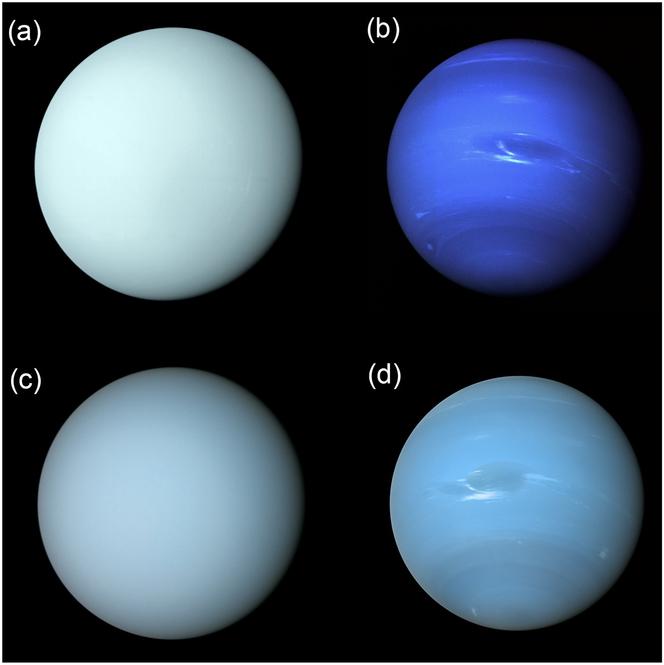


Uranus is pale blue, Neptune azure blue. At least, that's what we thought based on images sent by the American Voyager 2 space probe in 1986 and 1989. A study, published on January 5 in the journal Monthly Notices of the Royal Astronomical Society, destroys this preconception. In fact, the two ice giants share a quite similar greenish blue. "The difference in color between Uranus and Neptune is much less distinct than is seen in the color images released immediately after the Voyager 2 flybys of Uranus in 1986, and Neptune in 1989," write Patrick Irwin, of Oxford University (United Kingdom), and his colleagues.
Olivier Mousis, a researcher at the Laboratoire d'Astrophysique de Marseille (Marseille Astrophysics Laboratory, LAM), who was not involved in the study, said this puts things into perspective: "For 10 years or so, these images were a benchmark." Neptune's deep blue is in reality an artificial color resulting from the processing of images taken by Voyager 2. At the time, contrast had been greatly increased to bring out certain elements, such as clouds and winds.
For their study, the researchers analyzed a dataset collected by the Lowell Observatory in Arizona from 1950 to 2016. These were supplemented by information from the Space Telescope Imaging Spectrograph (installed on the Hubble Space Telescope) and the MUSE spectrograph at the Very Large Telescope in Chile. The aim was to reconstruct the colors of the Solar System's two most distant planets as faithfully as possible.
The color of the two giants is mainly due to their methane-rich atmosphere. This gas absorbs light in the red and green wavelengths and reflects the blue, giving a bluish-green hue. Nevertheless, the study shows that Neptune has a slight touch of extra blue, which the model interprets as a thinner layer of haze.
Above all, this work lifts the veil on the seasonal change in Uranus's color. In summer and winter, the planet appears greener, while in spring and fall, it displays bluer hues. The research team has shown that these variations are not only linked to differences in methane concentration – which is lower at the poles than at the equator. They are also due to the presence of a layer of icy methane that increases reflectivity in green and red wavelengths.
Researcher Mousis believes the icy planets are far from having revealed all their secrets. "Since Voyager 2, there has been no exploration of Neptune and Uranus," he pointed out. "Today, no one would say, 'Well, Mars is red, that's incredible,' because we have a wealth of information on this planet, as we do for Jupiter. It's a sign that we need more resources to explore the distant worlds of the icy planets."
